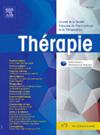Impact of new drug releases on heart failure management and hospitalizations in France: A repeated cross-sectional study between 2014 and 2023
IF 1.8
4区 医学
Q3 PHARMACOLOGY & PHARMACY
引用次数: 0
Abstract
Real-life data on the impact of sacubitril-valsartan and sodium-glucose cotransporter type 2 (SGLT-2) inhibitors on heart failure (HF) in France is lacking. Using French health insurance databases, we examined the ten-year evolution in HF medication use, focusing on SGLT-2 inhibitors and sacubitril/valsartan, and incidence of HF hospitalizations during the same period. We conducted a repeated cross-sectional study using medical-administrative data from French health insurance databases between 2014 and 2023. These included “OpenMedic” for outpatient medication reimbursements and “ScanSanté” for annual hospitalization data. Medications were classified using ATC codes, and hospitalizations were identified using ICD-10 codes. Statistical analyses encompassed annual rates of users and boxes dispensed for HF medications, along with HF, ischemic heart disease and ischemic stroke hospitalization rates. Prevalence of SGLT-2 inhibitors and sacubitril-valsartan use was also studied regionally, with direct standardization by age and sex, with the French population as the standard population. Between 2014 and 2023, HF drug use increased significantly, with beta-blockers and ACE inhibitors/ARBs leading in prevalence of use. ARNi and SGLT-2 inhibitors, introduced later, showed remarkable rises: +506% and +3766% in users since their market introduction, respectively. Meanwhile, HF hospitalizations slightly increased by +3.6% between 2016 and 2019, followed by a notable decline of −12.5% during 2019–2023, coinciding with the introduction of SGLT-2 inhibitors. In contrast, hospitalizations for ischemic heart disease rose by 11.6% over the period 2016–2019 and by +5.2% over the period 2019–2023, and hospitalizations for ischemic stroke rose by 8.2% over the period 2016–2019 and declined by −0.6% over the period 2019–2023. We observed regional disparities in SGLT-2 inhibitors use, with prevalence ranging from 0.9% in Bretagne to 1.5% in Hauts-de-France. The data suggests a temporal correlation between the increase in SGLT-2 inhibitors use and the decline in HF hospitalizations since 2019. More studies are needed to measure real life effectiveness of SGLT-2 inhibitors in heart failure.
新药发布对法国心衰管理和住院治疗的影响:2014年至2023年间的重复横断面研究。
法国缺乏有关沙库比曲利-缬沙坦和钠-葡萄糖共转运体 2 型(SGLT-2)抑制剂对心力衰竭(HF)影响的真实数据。我们利用法国医疗保险数据库,研究了十年来心力衰竭用药的演变情况,重点是 SGLT-2 抑制剂和沙库比曲利/缬沙坦,以及同期心力衰竭住院的发生率。我们使用法国医疗保险数据库中 2014 年至 2023 年间的医疗行政数据进行了重复横断面研究。这些数据库包括用于门诊药物报销的 "OpenMedic "和用于年度住院数据的 "ScanSanté"。药物使用 ATC 代码分类,住院则使用 ICD-10 代码识别。统计分析包括高血压药物的年度使用率和配药盒数,以及高血压、缺血性心脏病和缺血性中风的住院率。此外,还按地区研究了SGLT-2抑制剂和沙库比曲-缬沙坦的使用率,并以法国人口为标准人群,按年龄和性别直接进行了标准化。2014 年至 2023 年期间,高血压药物的使用率显著增加,其中β-受体阻滞剂和 ACE 抑制剂/ARB 的使用率居首位。后来引入的 ARNi 和 SGLT-2 抑制剂则出现了显著增长:+自上市以来,这两种药物的使用率分别增加了 506% 和 3766%。与此同时,2016 年至 2019 年期间,高血压住院治疗略有增加,增幅为 +3.6%,随后在 2019-2023 年期间显著下降,降幅为 -12.5%,这与 SGLT-2 抑制剂的推出不谋而合。相比之下,缺血性心脏病的住院人数在 2016-2019 年期间增加了 11.6%,在 2019-2023 年期间增加了 +5.2%;缺血性中风的住院人数在 2016-2019 年期间增加了 8.2%,在 2019-2023 年期间下降了 -0.6%。我们观察到 SGLT-2 抑制剂使用的地区差异,流行率从布列塔尼大区的 0.9% 到上法兰西大区的 1.5%。数据表明,SGLT-2 抑制剂使用率的增加与 2019 年以来高血压住院率的下降之间存在时间相关性。要衡量SGLT-2抑制剂对心衰的实际疗效,还需要进行更多的研究。
本文章由计算机程序翻译,如有差异,请以英文原文为准。
求助全文
约1分钟内获得全文
求助全文
来源期刊

Therapie
医学-药学
CiteScore
3.50
自引率
7.70%
发文量
132
审稿时长
57 days
期刊介绍:
Thérapie is a peer-reviewed journal devoted to Clinical Pharmacology, Therapeutics, Pharmacokinetics, Pharmacovigilance, Addictovigilance, Social Pharmacology, Pharmacoepidemiology, Pharmacoeconomics and Evidence-Based-Medicine. Thérapie publishes in French or in English original articles, general reviews, letters to the editor reporting original findings, correspondence relating to articles or letters published in the Journal, short articles, editorials on up-to-date topics, Pharmacovigilance or Addictovigilance reports that follow the French "guidelines" concerning good practice in pharmacovigilance publications. The journal also publishes thematic issues on topical subject.
The journal is indexed in the main international data bases and notably in: Biosis Previews/Biological Abstracts, Embase/Excerpta Medica, Medline/Index Medicus, Science Citation Index.
 求助内容:
求助内容: 应助结果提醒方式:
应助结果提醒方式:


